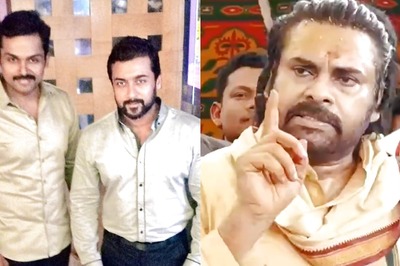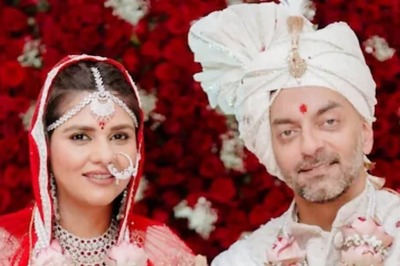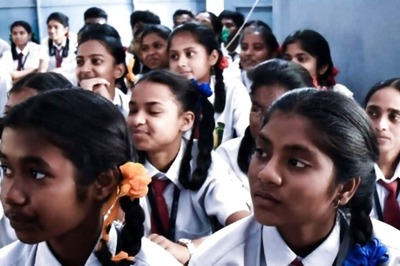
views
The destructive second wave of COVID-19 is ravaging India, with nearly 25.5 million cases and 283,248 deaths recorded as of the end of May. India’s rural areas cover 66.5 per cent of the country’s population. However, nearly 60 per cent of hospitals, 80 per cent of doctors, and 75 per cent of medical facilities are situated in urban areas.
During the first wave, COVID-19 cases started increasing in the urban areas initially and spreading to rural areas (65 percent including semi-rural areas by September 2020) with second wave following a similar pattern. The cause for concern is the fact that a surge in registered cases has not seen a parallel rise in inoculation in rural areas. With more than 60 per cent of cases coming from the rural and semi-rural districts, only an estimated 12-15 per cent of the people received at least one dose by May 14. Only an estimated 2.6 per cent of the rural population was completely vaccinated by May 14, even as an estimated 7.7 per cent of urban dwellers had both doses.
At the end of May, only 3.1 percent of India’s population was fully vaccinated with urban districts receiving 1.7 times more vaccines than their rural counterparts. COVID-19 vaccine penetration has been hampered by many challenges including vaccine hesitancy spurred by rumours and misconceptions and digital dependency issues arising from mandatory registration on the Co-WIN app for those between 18 to 44 years of age. The access to vaccination centers significantly gets disrupted, especially for socio-economically weaker sections who are digitally illiterate, with less or no access to technology (bots/applications), lack of smartphone accessibility, no or disrupted internet connectivity, language disconnect and local health care centres being located miles away.
Smartphones, Internet and Digital Know-how
While India had 450 million smartphone users as of 2019, only 25 per cent of its rural citizens had a device. Only 4 per cent of Indians in rural areas and 23 per cent in urban areas had access to computers. Internet connections aren’t universal either—just over 34 per cent of Indians have one. Given this, in some parts of India with poor network signal, around 550 million Indians continue to use feature phones with important phone numbers set on speed dial. It is then a leap to expect people to access digital apps like Co-WIN. Further, with just over 34 per cent of Indians having internet connection, and only 4 per cent of Indians in rural areas and 23 per cent urban areas having access to computers, the inoculation drive in rural areas is getting pushed backwards.
The platform favours the Internet-savvy urban population with access to advanced technology, further excluding less aware rural people with lack of digital know-how, out of the safety net. For instance, one of the respondents from Govindpur, a remote village in Odisha, did not have a laptop, and even the low-end smartphone couldn’t support the Co-WIN app—the official app meant to be used to check vaccine shot availability and book vaccination slots. Such a digital divide has forced digitally illiterate people to either visit registration centres or book vaccinations on the app with the help of some facilitator or be left out of the vaccination process. Supporting this, activist Pallabi Ghosh highlights the lack of communication around the registration process, citing the instance of one of the vaccination centers in Lumding, Assam, where people gathered to take the vaccine without knowing about the need for registering online before visiting the vaccination centre.
Similarly, a resident of Kashigaon village in Uttar Pradesh pointed out the difficulty in knowing how to register for the vaccine using his phones, despite having a common service centre (CSC) available near the village to access internet and get assistance with vaccine registrations.
Further, the process of registration on the Co-WIN portal for vaccination requires uploading identification proof. For certain people—street vendors; dwellers of urban slums, JJ clusters, and remotely inaccessible areas; people engaged in begging and the like—identification proof is hard to come by even during normal times, where they struggle to avail benefits from several Centre-state sponsored social protection schemes. Talking about the digital divide, the Co-WIN app further increases the divide by limiting its current access to only the English language, without considering that India has 22 official languages.
Apart from the general implications of not getting vaccinated, these households are also vulnerable to face wage loss as poor households can’t afford to forgo a day’s wage in such a time, especially to first spend hours booking a slot online, followed by the possible need to take days off to take each member of his/her family to their respective vaccination centres spread out beyond easy reach within their areas of habitation. One of the respondents from a village in Maharashtra, pointed out that the location of the Primary Health Centre being situated 8-km away and fear of hospitals, pushed people away from getting vaccinated.
Vaccine Hesitancy
Despite the second wave and surging infections and deaths, vaccine hesitancy prevails in rural India. There has been misinformation doing the rounds in different parts of the country owing to insufficient knowledge about COVID-19. What’s more, rumours over WhatsApp that blame vaccines for untimely deaths and a host of illnesses, and fake news that the vaccines contain pig meat and cow blood; and can cause infertility and even death have led many to believe that the vaccine is doing more harm than good. Such hesitancy and myths about COVID-19 and fear of vaccines act as the biggest hurdle to the vaccination drive.
Conclusion
It becomes critical to re-imagine policies and programmes, to enable last-mile connectivity in the vaccination drive similar to the development of polling booths during elections in India. What could help to fight lack of awareness, misinformation, myths and hesitancy among people and ensure India’s vaccination drive really progresses exclusion-free without exacerbating existing inequities, is social mobilisation strategies to reach the unreachable.
Equitable access to getting vaccines, walk-in option for those with special needs through free vaccination camps and conducting vaccinations without the burden of providing identity proof is the need of the hour. Lastly, it is imperative to develop a taskforce of influential local leaders and health workers at the Gram Panchayat level, to undertake door-to-door awareness campaigns about the vaccine rollout and bust the myths and consequent resistance observed in the rural pockets as well as to help with the registration process. This would ensure we learn our lessons and are prepared in advance for providing vaccination of all against future waves of the pandemic.
This article was first published on ORF.
Read all the Latest News, Breaking News and Coronavirus News here.




















Comments
0 comment